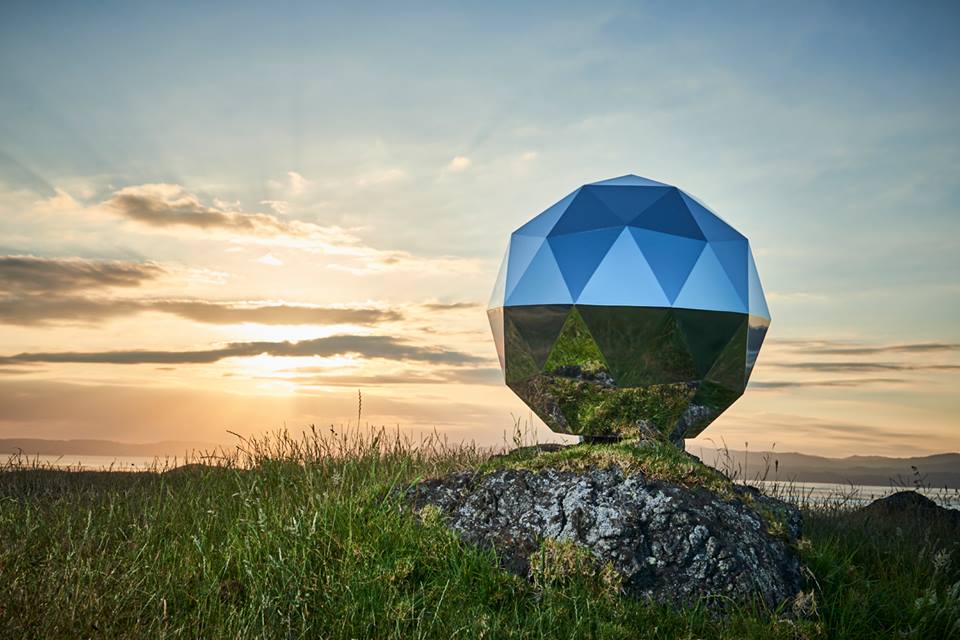Rocket Lab launched the Star of Humanity
Yesterday on the official Rocket Lab page on Facebook a message appeared :

On this page there is a brief description of the satellite, a tracker to track its position in orbit and a short FAQ.
The Star of Mankind will be in orbit for about nine months before it burns down in the atmosphere of the Earth.
The star of Mankind is visible in the night sky from anywhere in the world at dawn or dusk when it passes at the zenith above the observer.
In the article Private rocketeers snuck their own “star” into earth, they wrote about the issue of satellite visibility.
Resource Quartz turned to Kerry Kakha, an astronautics professor at MIT, asking if this satellite really is “the brightest object in the night sky,” as the company claims. The professor and his colleagues addressed this issue using publicly available data on the satellite orbit and its size.
“Yes, it could definitely be the brightest object in the night sky if he“ successfully ”catches the light,” Jim Clark, a graduate student at STARlab MIT, wrote in an email, adding that their satellite orbital calculations suggest that at the moment he is not will be visible at night between the latitudes of 46 ° north and 46 ° south.
Over time, the orbit will tilt, making the satellite visible at dawn and dusk in almost all over the world, provided that the observer and the satellite are in the right place at the right time.
Given the low orbit and relatively large mirrors, the Star of Humanity can be brighter than most stars in the sky, although not as bright as the planets. Other design features can make it even brighter. At best, he can "be bright enough during the day, that even in the tropics will be able to see him," writes Clark.
“Until the end of February, the observation conditions are bad, and only in March, observers on the mainland United States can easily see the satellite,” wrote Jonathan McDowell, a scientist from the Harvard-Smithsonian Center for Astrophysics, who also looked at publicly available data on satellite orbit.

PS Now you can add an event to the calendar Google, Apple, Windows

PPS Satellite left the orbit ahead of schedule March 22 Rocket Lab’s satellite discovery satellite
Meet the "Star of Humanity" - a bright, flickering satellite, rotating around the Earth, visible to the naked eye in the night sky. Last week, launched on #StillTesting , The Humanity Star is designed to encourage everyone to search and think about our place in the universe. Track The Humanity Star's location at www.TheHumanityStar.com

On this page there is a brief description of the satellite, a tracker to track its position in orbit and a short FAQ.
STAR OF MANKINDThe idea of creating the "Star of Humanity" was partially inspired by the phenomenon of the flash of Iridium.
The Humanity Star, seen from the ground with the naked eye, is a satellite with a highly reflective surface that flashes brightly in the night sky for everyone on our planet.
Created by founder and CEO of Rocket Lab Peter Beck, The Humanity Star is a carbon fiber geodetic sphere with 65 highly reflective panels. The satellite quickly rotates, reflecting the sun’s rays to Earth, creating a blinking light that can be seen against the stars.
Flying around the Earth every 90 minutes and visible from anywhere in the world, the Star of Mankind is intended to be a bright symbol and a reminder to everyone on Earth of our fragile place in the Universe.
The Star of Mankind will be in orbit for about nine months before it burns down in the atmosphere of the Earth.
The star of Mankind is visible in the night sky from anywhere in the world at dawn or dusk when it passes at the zenith above the observer.
Added by:
In the article Private rocketeers snuck their own “star” into earth, they wrote about the issue of satellite visibility.
Resource Quartz turned to Kerry Kakha, an astronautics professor at MIT, asking if this satellite really is “the brightest object in the night sky,” as the company claims. The professor and his colleagues addressed this issue using publicly available data on the satellite orbit and its size.
“Yes, it could definitely be the brightest object in the night sky if he“ successfully ”catches the light,” Jim Clark, a graduate student at STARlab MIT, wrote in an email, adding that their satellite orbital calculations suggest that at the moment he is not will be visible at night between the latitudes of 46 ° north and 46 ° south.
Over time, the orbit will tilt, making the satellite visible at dawn and dusk in almost all over the world, provided that the observer and the satellite are in the right place at the right time.
Given the low orbit and relatively large mirrors, the Star of Humanity can be brighter than most stars in the sky, although not as bright as the planets. Other design features can make it even brighter. At best, he can "be bright enough during the day, that even in the tropics will be able to see him," writes Clark.
Other design features could even make it brighter than that. In the best-case scenario, it could be “bright enough during the day.” Clark says.
“Until the end of February, the observation conditions are bad, and only in March, observers on the mainland United States can easily see the satellite,” wrote Jonathan McDowell, a scientist from the Harvard-Smithsonian Center for Astrophysics, who also looked at publicly available data on satellite orbit.

PS Now you can add an event to the calendar Google, Apple, Windows

PPS Satellite left the orbit ahead of schedule March 22 Rocket Lab’s satellite discovery satellite
